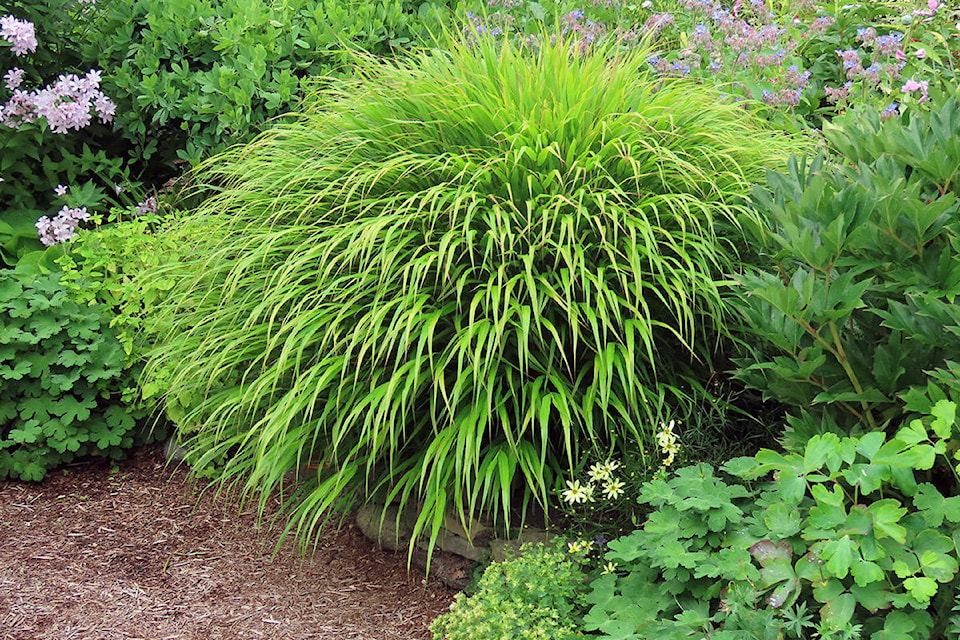Leslie Cox
Special to The Record
Typically, at this time year - one month into summer - I am keeping my eyes peeled for stand-out plants in the garden. Plants that are thriving on hot sun and little water. Most of my searching is through John’s garden as it gets more sun throughout the day, and he has the bigger garden with more plants than mine.
This year is different, however. I am seeing a few more “stand-out plants” because of our cooler spring. Kind of nice really. Makes me hopeful our growing season might extend further into fall to make up for our cooler than normal May. A gardener can certainly wish.
Alright. I know the suspense is killing you (if the heat isn’t). You want to know what caught my eye the other day. Hakonechloa macra, or Japanese forest grass.
This grass is a beautiful mound formed by a multitude of cascading one-inch wide, medium-green leaf blades. Slow growing, this grass will eventually reach two feet tall and wide when mature.
With a common name like forest grass you would think this plant would require a place out of the midday sun. Somewhere with mottled shade, soil rich in humus and a bubbling brook nearby. Its Asian heritage demands peace and tranquility. Right? Right…according to the North Carolina State University Extension Department.
Nope. This particular hakonechloa species actually likes full sun, medium soil and less water according to Digging Dog Nursery in Albion, California, Hoffman Nursery in Rougemont, North Carolina… and the Duke of Compost in Black Creek.
Truth be told, I think NCS Extension was generalizing in their website post to include the various cultivars in this species: ‘All Gold’, ‘Aureola’, ‘Albovariegata’, ‘Naomi’, ‘Nicolas’ and the most recent one – ‘Stripe It Rich’, released in 2012. (This is not a complete list of all cultivars available.) So, yes. These cultivars do need some shade, rich soil and regular water. The first two, especially, need sun protection or their gold-coloured leaf blades will scorch.
Another “stand-out plant” in the garden right now is Asarum europaeum, European wild ginger. Oh heck. Who am I kidding? This plant looks good all year round, except as winter is beginning to finally fade into spring. It is one of my favourites because it is evergreen, pest- and disease-resistant and easy care. All it needs is a complete haircut in late winter or early spring to get rid of last year’s leaves to showcase the unusual flowers and emerging bright green new growth.
Everything I have read about this wild ginger says it needs shade and soil rich in humus. Have you guessed? Yup. A seed from the main plant landed in full sun and the new plant is perfectly happy, soaking up the summer rays with nary a sunburn.
Note: Asarum europaeum seeds are reliably viable and get spread around the garden by small birds and insects. New seedlings are easy to pluck, once you have familiarized yourself with what they look like.
On the same self-seeding theme… Brunnera macrophylla or Siberian bugloss. Everyone knows this is a shade-loving plant that prefers moist, organic-enriched soil conditions. Well, one of the birds or insects deposited a seed on the path right up against the south side of the greenhouse. You got it. The new plant is flourishing in really tough soil with almost no water and being baked in full-blown sun. Truthfully, this is the happiest brunnera in our whole garden.
Seems you cannot believe everything you read. Just get out there and garden!
Leslie Cox co-owns Growing Concern Cottage Garden in Black Creek. Her website is at www.duchessofdirt.ca
